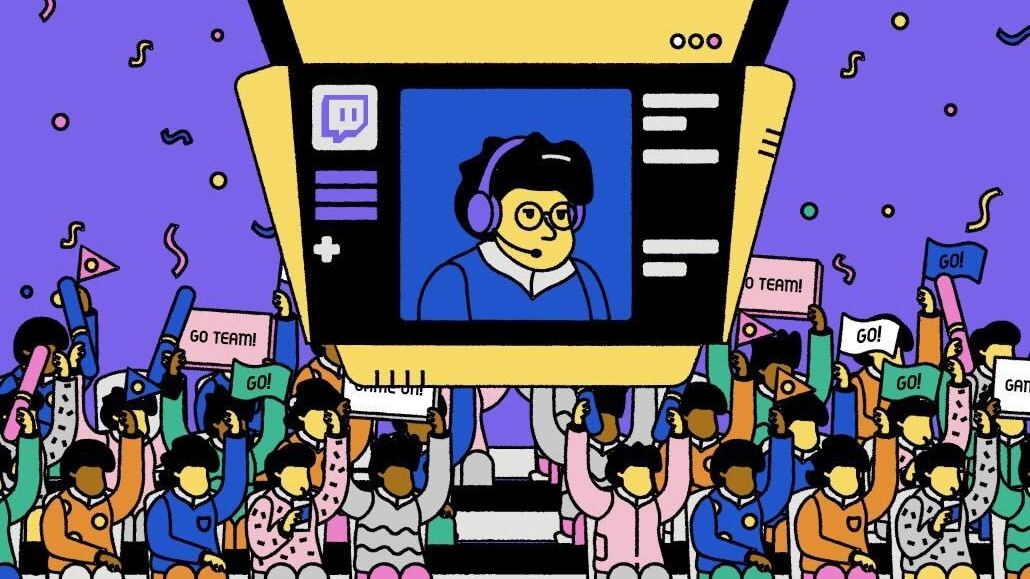Save 50% on a 3-month Digiday+ membership. Ends Dec 5.
This ad network is sidestepping esports’ media rights problems with a “many to many” broadcast model

In an industry whose audience is accustomed to watching Twitch and YouTube streams free of charge, esports companies have yet to successfully monetize media rights. By rolling together a multitude of smaller co-streams into a single bundle, ad network Thece is looking to create an alternative pathway for esports companies to generate revenue from their livestreamed content.
Thece came up with the idea after observing the vast gulf in engagement between the relatively small weekday streams and the playoff finals of NACE Starleague (NSL), a prominent collegiate esports league and one of Thece’s advertising partners.
“I was like, ‘how in the world did you get to 2 million impressions in your finals, when, Monday through Friday, you have 45 concurrent viewers?'” said Thece CEO Zachary Rozga.
Rozga discovered that NSL’s official Twitch channel had been broadcasting only a small portion of its nightly gameplay during the 2022 spring season — the single nightly contest deemed most notable by NSL’s staff. During the same period, many of NSL’s 690 participating universities, in addition to numerous individual streamers and competitors, would regularly stream or co-stream their sides of the competitions, creating the potential for Thece to increase the league’s advertising inventory by incorporating them into its official broadcast.
“Even looking at the base numbers from just the college streams, not the streamers themselves, it made the viewership go up by three to four times, instantly,” said Thece chief revenue officer Ian Owen-Ward. “So we thought, ‘hang on, there is something here.'”
Thece’s bundled approach allows the company to track ad impressions across co-streams in real time by implementing “a single line of code,” according to Rozga. “We can centrally manage the creative that’s in it, the reporting back to brands and the aggregation,” he said. “So if they’re running really short, we actually have to go boost impression loads, find more people to place it on. If they’re running high, we actually have to pull it in.”
Thece and NSL owner/operator Playfly Esports believe that this “many to many” strategy could help solve one of the esports industry’s most frustrating challenges: effectively monetizing livestreams. Esports fans are accustomed to watching gameplay for free on Twitch and YouTube, making it nearly impossible for leagues to sell media rights to advertising partners. Rozga described Thece’s approach as a form of “alternative media rights,” building value by offering advertisers access to NSL’s horde of smaller streamers, rather than via media rights to the content itself.
“We need to sell tools in a way that meets the audience where they’re at,” said Playfly Esports CEO Rob Johnson. “The many to many concept, that helps solve a big part of this problem. Maybe we don’t need media rights in esports.”
While bundling together co-streams is effective for collegiate esports, this approach could be more difficult to implement in professional esports, where the leagues’ broadcasts are more often centralized into a single official channel. Although Rozga pointed out that the major esports leagues are increasingly being co-streamed by prominent gaming influencers, those influencers are incentivized to sell their own advertising inventory, not roll it up.
“Ultimately, why the hell would I sign a deal with the league when I can just sign one with Deestroying?” said Jason Chung, director of esports and gaming at New York University, citing as an example a YouTuber who often creates football-related content. “He’s the one that’s bringing a million, and you’re overvaluing the dregs that I don’t need.”
Despite its potential scaling challenges, Thece is moving forward with its “many to many” broadcasting model for NSL’s upcoming fall season, which begins on September 8. Per Johnson, the league’s brand partners understand the fragmented nature of its audience and have responded positively to the bundled advertising approach. If the experiment is successful, it could provide a more effective business model for collegiate esports broadcasts, regardless of whether it can be applied to professional esports.
“It all comes down to execution, and to identifying the correct consumer for this data,” Chung said. “If it makes a meaningful difference to the organizers or the people actually selling the advertising stock, then more power to them.”
More in Marketing

Ulta, Best Buy and Adidas dominate AI holiday shopping mentions
The brands that are seeing the biggest boost from this shift in consumer behavior are some of the biggest retailers.

U.K. retailer Boots leads brand efforts to invest in ad creative’s data layer
For media dollars to make an impact, brands need ad creative that actually hits. More CMOs are investing in pre- and post-flight measurement.

‘AI is permeating everything we do’: How Guitar Center developed 2 AI tools this year
This summer, the company launched a chatbot called Rig Advisor to help customers find the right instruments and products.
Ad position: web_bfu








